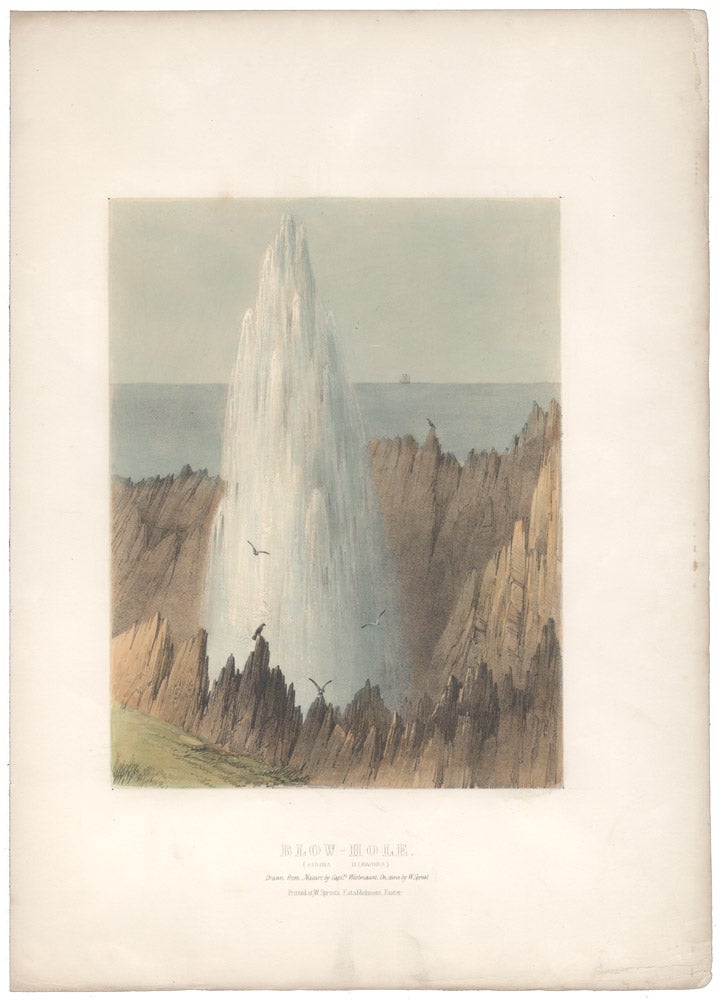Blow-Hole (Kiana Illawarra). Drawn from nature by Capt. Westmacott. On stone by W. Spreat.
Exeter: W.Spreat, 1848.
Handcoloured lithograph, 225 x 170 mm.
Kiama's famous Blow-Hole
A fine Australian view by Robert Marsh Westmacott (1801-1870) from his Sketches in Australia, a series of tinted lithographic plates of Sydney and Harbour areas, mountains and southern coastal regions of New South Wales, "drawn from nature". "The Blow Hole is situated in Illawarra, upon a rocky point of land running into the sea, this forms the south side of the Harbour of the Township of Kiama. The singular appearance the Blow Hole presents, is caused by the swell of the Pacific rushing into an apperture from the cliff, running a considerable distance inland; the entrance of the opening is on the both sides beautifully supported by basaltic columns. The great force with which the water enters, causes it to expend itself against the side of a basin or crater at the extremity; a magnificent column of white foam is thrown up, sometimes to the height of one hundred and fifty feet, causing a noise that may be heard several miles from the spot".
A fine Australian view by Robert Marsh Westmacott (1801-1870) from his Sketches in Australia, a series of tinted lithographic plates of Sydney and Harbour areas, mountains and southern coastal regions of New South Wales, "drawn from nature". "The Blow Hole is situated in Illawarra, upon a rocky point of land running into the sea, this forms the south side of the Harbour of the Township of Kiama. The singular appearance the Blow Hole presents, is caused by the swell of the Pacific rushing into an apperture from the cliff, running a considerable distance inland; the entrance of the opening is on the both sides beautifully supported by basaltic columns. The great force with which the water enters, causes it to expend itself against the side of a basin or crater at the extremity; a magnificent column of white foam is thrown up, sometimes to the height of one hundred and fifty feet, causing a noise that may be heard several miles from the spot".
Little is known of Westmacott, except that he was a captain in the 4th (King's Own) Regiment, and that he spent the early 1840s in Australia. His published views represent the last in the chronology of work by military or naval officers in the romantic landscape tradition of the early 19th century.
Condition Report: Very good.
Price (AUD): $650.00
US$418.41 Other currencies


